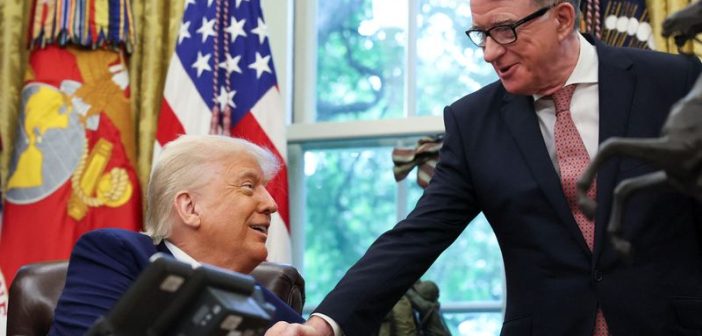On May 8, 2025, President Donald Trump and UK Prime Minister Sir Keir Starmer announced a new bilateral trade agreement aimed at revitalizing economic relations between the two nations. This deal introduces significant tariff adjustments and opens markets for various industries, marking a pivotal moment in US-UK trade relations.
Key Provisions of the Trade Agreement:
-
Automotive Sector: The United States will impose a 10% tariff on up to 100,000 UK-manufactured vehicles annually, a reduction from the previous 27.5% rate. This change is expected to benefit UK automakers, including Rolls-Royce, whose shares rose over 3% following the announcement.
-
Steel and Aluminum: Tariffs on UK steel and aluminum exports to the US will be eliminated, establishing a new trading zone for these metals.
-
Agricultural Products: The agreement facilitates increased US exports of beef, ethanol, and machinery to the UK, with the UK reducing or eliminating its 2% digital services tax.
-
Pharmaceutical Supply Chain: Both nations have committed to creating a secure pharmaceutical supply chain, enhancing cooperation in this critical sector.
Economic Impact and Reactions:
President Trump described the deal as “full and comprehensive,” emphasizing its role in strengthening the longstanding alliance between the US and the UK. He noted that the agreement would generate $6 billion in external revenue and create $5 billion in new export opportunities for the US.
UK Prime Minister Sir Keir Starmer hailed the agreement as a significant boost for key sectors like automotive and steel. However, some UK political figures expressed concerns. Kemi Badenoch, leader of the Conservative Party, criticized the deal, stating, “When Labour negotiates, Britain loses. We cut our tariffs — America tripled theirs.”
Financial markets responded positively to the announcement. The S&P 500 and the US Dollar Index both experienced gains, reflecting investor optimism about the potential for similar agreements with other key partners.
Future Outlook:
While this agreement marks a significant step in US-UK trade relations, it also sets a precedent for future negotiations. President Trump indicated that the 10% tariff rate applied to the UK represents the “lowest end,” suggesting that other countries may face higher rates in subsequent deals.
As the US continues to renegotiate global trade frameworks, ongoing talks with other nations, including China, are anticipated. The outcomes of these discussions will further shape the international trade landscape in the coming months.




